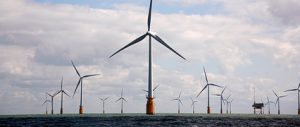The seven bilateral clean-energy agreements signed by Hu Jintao and Barack Obama in the autumn of 2009 focused on renewable energy, advanced coal technology, energy efficiency, electric vehicles and other technologies to promote lower-carbon growth.
These agreements have propelled numerous public and private-sector collaborations, such as Duke Energy and China-based ENN Group’s solar power, smart grid and energy-efficiency projects. But such partnerships have been downplayed as the United States and China have grappled with how to properly compete in the clean-energy sector. Strikingly, clean energy was barely mentioned during Chinese vice president Xi Jinping’s visit to the United States in February.
As trade tensions between the United States and China grow, energy experts say it is an important time to dig deeper into Chinese investments in America’s clean energy. Can they create a profitable and sound platform on which the two countries can build stable relations?
Recent deals made between American and Chinese companies indicate they can. In early 2012, new clean-energy deals targeted manufacturing in the United States. Yingli Green Energy Holding Company, for example, agreed in February to purchase materials from US firm DuPont to produce photovoltaic (PV) panels. EmberClear and China’s Huaneng Clean Energy Research Institute agreed to build a coal-to-gas plant that could create more than 1,000 jobs, according to the two companies.
And China’s Wanxiang (USA) Holdings Corporation invested US$420 million (2.6 billion yuan) in Massachusetts-based GreatPoint Energy to develop technology that converts coal to gas.
Although the costs of wind and solar power have significantly dropped, the US clean-energy industry is still in its infancy, and many companies are unable to stand on their own without government support. The 2011 collapse of Californian solar-panel manufacturer Solyndra, which had received US$535 million (3.4 billion yuan) in federal loan guarantees, has made domestic investors and the US government wary of the entire industry.
In stark contrast, Chinese policymakers and investors have been pushing ahead on clean energy, both at home – with an ambitious new five-year plan – and in foreign markets.
Since 2006, China has invested about US$6 billion (38 billion yuan) in US clean-energy projects. This is a small percentage of what the United States has spent on its domestic clean energy, which according to Bloomberg was US$55.9 billion (352 billion yuan) in 2011. However, Chinese investment in the US clean-energy sector has risen sharply over the past five years, reaching US$264 million (1.7 billion yuan) in 2011 alone. Over the past two years, Chinese investment in renewable energy has grown at an annual rate of 130%.
Total Chinese investment in the United States in the first nine months of 2011 was US$4.2 billion (26 billion yuan) according to a 2011 report by the Rhodium Group, an advisory firm that conducts research on Chinese investment. Clean-energy investments have been among the fastest growing sectors since 2008. About three-quarters of the total investment went into greenfield projects – new projects as opposed to mergers and acquisitions – and about half of the investors have been private Chinese multinationals.
Most of these investments appear to be aimed at selling Chinese manufactured modules such as turbines or solar panels, which often contain components made around the world, in the United States.
Critics argue that Chinese investment in US clean energy leads to theft of American jobs and intellectual property. However, clean-energy investments in particular are good for the US economy, the environment and global energy security, Derek Scissors, an Asian studies research fellow at Washington-based conservative think-tank The Heritage Foundation has argued. Even if clean-energy components are manufactured in China, installation of these systems can result in the creation of American jobs, Scissors said.
The question of equity in job creation surrounding clean-energy projects came to the fore in 2009, when US regulators raised concerns about using stimulus money from the American Recovery and Reinvestment Act to purchase Chinese-made wind turbines for a proposed wind farm in Texas. China’s A-Power Energy Generation Systems was the project’s largest investor.
Job-creation projections by three high-profile renewable energy farms built with Chinese investment (A-Power, Xinjiang Goldwind Science and Technology and Suntech Power) indicates that about one job is created for every million dollars invested. Multiplied by the total Chinese investment in the sector, this amounts to a modest 6,000 jobs since 2006.
But, because US manufacturing is more mechanised than Chinese manufacturing, Chinese factories tend to manufacture and assemble modules, often using American-made components. The industry is complex, and any system will include parts manufactured from all over the world. For example, the polysilicon production for Chinese solar company Suntech is done by US-based MEMC Electronic Materials, according to Bloomberg.
Furthermore, studies have shown that most jobs created by clean-energy investment are downstream – meaning they are in the installation and maintenance of solar panels and wind turbines, rather than the increasingly mechanised manufacturing process.
A study commissioned by Duke Energy in 2010 estimated that 73% of jobs created in US-China partnerships in the power sector would occur where the infrastructure was built, even when much of the capital equipment was imported. The Coalition for Affordable Solar Energy (CASE), an alliance of US-owned or US-based solar companies, calculates that roughly 52% of jobs in the solar industry are in installation and 17% are created in sales. This means the majority of jobs go wherever the technology is deployed, not where it is manufactured.
Some Chinese companies are responding to the growing concerns over trade. Goldwind’s project in Shady Oaks, Illinois, for example, is expected to use 60% locally manufactured materials despite importing the turbines from China. The A-Power project in Texas meanwhile appears to be proceeding with American steel components.
Despite recent tension, the outlook for Chinese investment in the US clean-energy market is positive. China’s stockpile of foreign reserves and under-diversified portfolio has Beijing searching for higher-yield returns in more asset-based and infrastructure-related projects. Following major losses in countries such as Libya, China is also looking to invest in more stable markets.
China’s 12th Five-Year Plan emphasises environmental mandates, with low-carbon measures topping the priorities. Chinese solar-energy companies have overproduced in the domestic PV market, deepening the need to look abroad for sales. Furthermore, wages in China are rising 10% to 25% a year, driving up the cost of manufacturing and encouraging Chinese companies to broaden their sights. US companies are increasingly seen as a safe and affordable option for Chinese investors.
But barriers remain. An uncertain market and lack of supportive national policies are two of the most significant. The US federal government is sending mixed signals to the market by claiming it is dedicated to clean energy at the same time as it continues to support the oil and gas industries with subsidies. Meanwhile, many of the US stimulus incentives for solar and wind power, such as tax credits, will expire unless Congress acts to renew them. “Both US and foreign financiers are looking for positive signals from the government,” said Tom Weirich, vice president of membership and corporate relations at the non-profit organisation, the American Council on Renewable Energy.
Recent events have added to the uncertainty. In March, the Department of Commerce said it would impose tariffs of 2.9% to 4.7% on Chinese-made solar panels following an antidumping case filed by SolarWorld Industries America, a founding member of the Coalition for American Solar Manufacturing (CASM), which accused China of dumping silicon solar PV cells in the American market. A report by the Coalition for Affordable Solar Energy, which opposed the case, argued that nearly 50,000 American jobs could be lost as a result of tariffs.
Chinese companies that want to invest in the United States can also find it difficult to navigate the 50-state system, with its different regulations and incentives, said Weirich. Local governments in the US are increasingly trying to facilitate Chinese investment by setting up offices in China and organising business delegations.
In some cases, states are using local policy incentives to compete with each other for investment. Illinois and California, the top two recipient states of Chinese clean-energy investment, have both introduced Renewable Portfolio Standards, which mandate that utilities steadily increase energy from renewable sources, guaranteeing returns on clean-energy investments.
Both states have also actively courted China. California, in particular, established formal relations with Jiangsu province – which promises to be a Chinese clean-energy leader – in the hope of enhancing cooperation on energy and reduction of greenhouse-gas emissions. And both states have indicated high-level support for the relationship by sending their governors to China to highlight trade deals.
Still, US officials are only in the early stages of attracting international investment. Most experts interviewed for this article said they had been approached by local governments seeking basic advice on Chinese business etiquette.
The energy and economic challenges that the United States and China face provide a nexus for cooperation. Renewable energy offers more opportunity than traditional energy for Chinese investors because it is not as politically sensitive, said Ken Su, a partner at PriceWaterhouseCoopers in Beijing. China can bring investment and an enormous future market, and the United States can reciprocate with innovation and clean-energy demand.
And, for the US clean-energy companies that do manage to get Chinese investment, “the benefits are more than just cash,” said Ashok Sinha, chief executive of Sunpreme, whose investors include Tsing Capital’s China Environment Fund. “They promote collaboration between portfolio companies, leading to nice synergies and more value to all partners.”
This article was first published in the April-June 2012 edition of The China Business Review, the magazine of the US-China Business Council. It is edited and used here with permission.
Linden J Ellis([email protected]) is a freelance journalist and former US project director at chinadialogue. Jennifer Turner (jennifer. [email protected]) is the director of the China Environment Forum at the Woodrow Wilson International Center for Scholars, where Devin Kleinfield-Hayes([email protected]) is a research assistant.
Homepage image by Steve Jurvetson shows US energy secretary Steven Chu (second from left) at the offices of technology firm HP.


